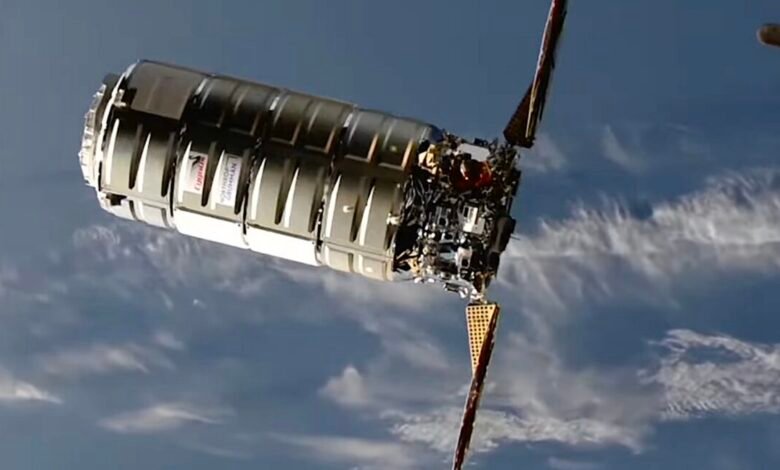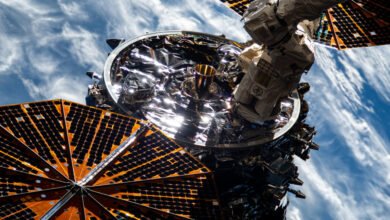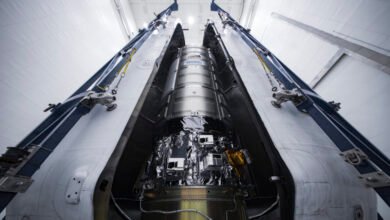Northrop Grumman Overcomes Software Glitch to Resupply ISS

▼ Summary
– Northrop Grumman’s Cygnus XL cargo freighter arrived at the International Space Station a day late, delivering over 5 tons of supplies and experiments.
– NASA astronaut Jonny Kim captured the spacecraft using the station’s robotic arm at 7:24 am EDT on Thursday.
– The robotic arm positioned Cygnus over the Unity module, where 16 bolts secured it to the station.
– The spacecraft will remain docked for up to six months for unloading and trash loading before a destructive reentry over the Pacific Ocean.
– The mission faced a delay due to an early shutdown of Cygnus’s main engine during approach burns on Tuesday.
After a slight delay, a Northrop Grumman Cygnus XL cargo ship successfully docked with the International Space Station on Thursday, bringing more than five tons of essential supplies and scientific experiments to the orbiting outpost’s seven-member crew. The mission underscores the resilience of commercial space logistics even when technical challenges arise.
At 7:24 AM Eastern Time, NASA astronaut Jonny Kim skillfully maneuvered the station’s robotic arm to capture the approaching Cygnus spacecraft. Shortly after, the arm guided the vehicle to a berthing port on the Unity module, where sixteen bolts secured a tight mechanical link to the complex. The entire process unfolded smoothly, marking another routine yet critical delivery for the station’s ongoing operations.
The Cygnus freighter is scheduled to remain attached to the ISS for as long as six months. During this period, crew members will unload its cargo—which includes research hardware, crew provisions, and vehicle hardware—and later repack it with station waste. Once its stay concludes, the spacecraft will undock and intentionally burn up during reentry over an uninhabited area of the Pacific Ocean.
Despite a flawless launch from Cape Canaveral atop a SpaceX Falcon 9 rocket on Sunday, the mission encountered a minor hiccup early Tuesday. The spacecraft’s main engine cut off prematurely during two planned maneuvers designed to refine its trajectory toward the space station. Flight controllers quickly assessed the issue and implemented a workaround, allowing the rendezvous to proceed with only a one-day delay. The incident was resolved without impacting the overall success of the resupply operation.
(Source: Ars Technica)





